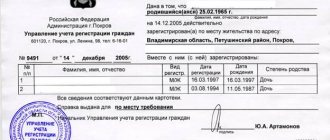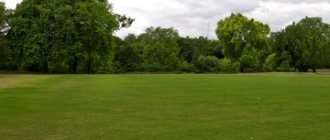Art. 9 of the Constitution of the Russian Federation provides: “land and other natural resources may be in private, state, municipal and other forms of ownership.” The subjunctive mood used in the wording of the article, as well as the admissibility of other forms of ownership, seem to give Art. 9 of the Constitution has a broad meaning, allowing the issue of forms of ownership to be resolved without being bound by strict time, territorial and other criteria.
In practice, all three forms of land ownership listed in the Constitution of the Russian Federation are presented:
- state,
- municipal,
- private.
The concept of “land ownership”
The object of ownership of land is a land plot. This concept is discussed in paragraph 3 of Art. 6 of the Land Code of the Russian Federation of October 25, 2001 No. 136-FZ (hereinafter referred to as the Land Code of the Russian Federation): this is an immovable thing that is a part of the earth’s surface and has characteristics that allow it to be defined as an individually defined thing.
The content of “property rights,” which applies to any objects of civil rights, including land plots, is established by civil law. According to Art. 209 of the Civil Code of the Russian Federation (Part 1) dated November 30, 1994 No. 51-FZ (hereinafter referred to as the Civil Code of the Russian Federation), the owner has the rights to own, use and dispose of his property. Relations of ownership, use and disposal of a land plot, which constitute the content of land ownership, are regulated by both land and civil legislation. Land legislation, perceiving the institution of “property rights”, cannot exclude any of the provisions constituting the rights of the owner, since a separate branch - land law - should not change the content of a general legal institution.
At the same time, given that land is an unusual object of law, the provisions of civil law on the possibility and criteria for regulating relations related to property rights and its implementation follow. So, in accordance with paragraph 3 of Art. 209 of the Civil Code of the Russian Federation “Content of Property Rights”, ownership, use and disposal of land is carried out freely, if this does not cause damage to the environment and does not violate the rights and legitimate interests of other persons.
The object of ownership of a land plot is a separate plot of land or a share in the right to it, owned by a certain entity.
Land ownership includes three main elements (powers) - possession, use and disposal of a land plot:
Ownership of a land plot is the basis for the emergence and termination of the right of lifelong inheritable ownership of a land plot. It creates the necessary prerequisites for the implementation of two other powers - use and disposal. Ownership of a land plot is the possession of a plot of land as property (for a legal entity this is the ability to list it on its balance sheet). In other words, “possession” means the possibility of allocating a plot of land, erecting fences, other fences, warning signs, and carrying out land surveying. Implementation of measures to protect the territory, registration of ownership or lease (sublease) of other citizens or organizations.
Land use is the right to use not only the surface of a land plot and its soil cover, but also the mineral resources and water resources available on the land plot, that is, the opportunity to extract useful properties. Also (if this corresponds to the intended purpose of the site), residential, industrial, cultural and other buildings and structures can be erected on it. That is, the use of a land plot is the use of a property in accordance with its purpose at the discretion and desire of the user and owner. Use is the assignment by the owner of the useful properties of an object. This means for the owner the opportunity to manage the land, protect against pests and create conditions for soil fertility, receive income from leasing or transferring ownership to other entities.
Disposal of a land plot is a way of implementing relations between the object and the subject of ownership; the right to decide how and by whom the land plot can be used; the opportunity for the owner to determine the legal fate of his land. Disposition - the ability to determine the legal fate of the subject of transactions: sale, exchange, division, lease, rent, and other actions. “Power” means the ability to change the category of a site at one’s own discretion, erect residential and commercial buildings, and set limits for land use.
Land ownership of citizens and legal entities in the Russian Federation
Land ownership of citizens and legal entities is determined in accordance with Art. 15 Land Code of the Russian Federation:
- the property of citizens and legal entities (private property) are land plots acquired by citizens and legal entities on the grounds provided for by the legislation of the Russian Federation;
- citizens and legal entities have the right to equal access to the acquisition of land plots of ownership. Land plots that are in state or municipal ownership may be made available to citizens and legal entities, with the exception of land plots that, in accordance with this Code and federal laws, cannot be privately owned;
- foreign citizens, stateless persons and foreign legal entities cannot have ownership of land plots located in border territories, the list of which is established by the President of the Russian Federation in accordance with the federal legislation on the State Border of the Russian Federation, and in other specially established territories of the Russian Federation in accordance with federal laws.
In accordance with Art. 209 of the Civil Code of the Russian Federation, the owner has the right, at his own discretion, to take any actions in relation to his property that do not contradict the law and other legal acts and do not violate the rights and interests protected by law of other persons. At the same time, the ownership, use and disposal of land and other natural resources, to the extent that their circulation is permitted by law, is carried out by their owner freely, if this does not cause damage to the environment and does not violate the rights and legitimate interests of other persons.
According to land legislation, land must be used in accordance with its intended purpose, determined by belonging to a particular category of land, and permitted use. The owner of a land plot must carry out measures to protect land, comply with the specially specified requirements of regulations, rules and standards when using land plots, prevent pollution, littering, degradation and deterioration of soil fertility on lands of the relevant categories, fulfill other duties provided for by the Land Code of the Russian Federation and other federal laws. laws.
The law also provides for restrictions in certain cases on the powers of the owner to dispose of a land plot. Yes, Art. 37 of the Land Code of the Russian Federation provides for special requirements for the procedure for concluding agreements for the purchase and sale of land plots.
Objects of land ownership have the following characteristics:
- identification – individual characteristics, such as: cadastral number, specific location or address, type of permitted use, intended purpose;
- volume of ownership - single right of ownership or share in property; cadastral value;
- the possibility of making transactions with it - participation in free (market) turnover.
Kinds
During the existence of the USSR, the only acceptable option for owning plots was state ownership. For this reason, it was not appropriate to conduct a property analysis. Currently, the Constitution states that there are several types of ownership in relation to land.
It is indicated that lands can belong to private individuals, organizations or the state. There are also municipal and public forms of ownership, and mixed types are allowed. Persons in a marriage relationship, as well as members of partnerships and peasant farms, may have rights to own real estate.
The essence of ownership
The more common of the above are the rights of individuals and government bodies. Today, the principles of democracy apply, according to which almost every person can obtain land ownership. Considering what type of property is assigned to the plot, certain rules are established regarding its use.
For example, when the state owns land, it is endowed with different rights compared to the situation if the owner is a citizen.
Private property
Individual citizens, as well as a company carrying out a certain type of activity, can have rights to land plots. In addition to the land itself, the rights extend to buildings located on the site, vegetation, trees and other immovable objects.
Private ownership of land
The exception is the location of a monument of cultural significance on the territory, which cannot be demolished. The state body has the authority to do so. A private person may have closed reservoirs located on the site. They are small in size.
You can obtain the rights to the allotment in question using:
- passing the privatization procedure;
- inheritance legal relations;
- drawing up a deed of gift;
- concluding purchase and sale agreements;
- exchange for other property and other transactions.
It can also be said that the allotment may be part of the contribution that is invested in the capital of the newly created company. Land legislation has a separate provision regarding the ownership rights of private individuals. All powers are described in detail as follows. It is indicated that the owner has the opportunity to own and dispose of the property at his own discretion.
Entity
Civil and land legislation indicates the peculiarities inherent in the procedure for registering rights regarding an allotment for organizations.
It is indicated that such an owner is endowed not only with the powers of ownership, but is also allowed to carry out activities of an economic nature. The owner has the opportunity to own the plot and also carry out actions aimed at its alienation in the manner prescribed by law.
Types of property in settlements
A person can realize the allotment by selling it in full or some part. You can also register a mortgage on the property, draw up a deed of gift, and transfer it through inheritance legal relations. Structures located on the land plot can be alienated separately or together with the plot. This rule is established in land legislation.
To determine the size of the part of the plot that is subject to alienation, the provisions of the Land Code are used. When land is withdrawn from circulation, actions to alienate it cannot be carried out.
It is worth paying attention to the fact that the presence of rights regarding the site implies the presence of responsibilities on the part of the owner. An example is that the owner undertakes to monitor compliance with environmental standards on his site.
Responsibilities also include land surveying requirements, compliance with boundaries established with neighboring plots, and monitoring the environmental condition of the site as a whole. These provisions must be taken into account during the use of plots.
When a person commits actions that violate the boundaries of plots, or the environment is polluted, it is likely that the violator is threatened with visiting the judicial authority conducting proceedings on this issue. If the use does not violate any rights, it can be carried out by the owner in any convenient form.
Public and municipal property
Civil and land legislation contains the nuances of ownership of property owned by the municipality, which is of general importance. It also indicates how ownership of a land plot that was previously recognized as ownerless occurs.
Municipal property rights
Currently, you can find the option of owning plots under consideration:
- on farms engaged in farming and peasant activities;
- partnerships with a horticultural focus;
- collective farms;
- enterprises engaged in agricultural cooperative activities;
- cooperatives engaged in livestock farming activities with a housing and garage orientation.
There are two forms by which ownership of municipal property is carried out. In the first situation, a certain land plot is established for each owner, which becomes his possession (this form is called shared).
Common property right
The second situation is related to the fact that shares in real estate are not subject to determination, since all land is in common ownership. The purpose of creating such a form is to satisfy people's needs. The needs are communal and agricultural in nature.
When a person owns a certain share of land in a municipality, he has the opportunity to realize it through sale. It is worth keeping in mind that those who own the remaining shares of such land have priority rights to purchase.
State uniform
All plots that are not subject to private or municipal ownership are automatically considered Russian property. This rule is enshrined in civil law. There are two levels of state ownership:
- property belonging to the federation;
- property of the regions.
When it comes to ownership at the federal level, we can say that the country has rights to individual land plots. They mean:
- lands where parks and reserves are located;
- plots created for security purposes;
- occupied with space-oriented systems;
- necessary for the location of nuclear power facilities;
- other allotments specified in the Constitution.
The authorities can transfer these territories to municipal ownership on the basis of a lease agreement, as well as to private individuals for the purpose of erecting buildings or growing various crops. A land easement may be established.
The state has the authority to acquire plots of land from private individuals, provided that the lands have been put up for sale.
In territories located in the neighborhood there may be lands owned by the state, but belonging to different categories. Some sites imply that construction work and scientific research may be carried out on their territory. At the same time, it is not permissible to do this on other plots. An example is the territory where parks, nature reserves, etc. are located.
Restrictions on ownership of land objects
In accordance with Art. 213 of the Civil Code of the Russian Federation, citizens and legal entities may own any property, with the exception of certain types of property, which, in accordance with the law, cannot belong to them. Thus, not all land plots can be owned by private individuals. The list of lands withdrawn from circulation, which cannot be in private ownership, and lands limited in circulation, which are not subject to transfer into private ownership, except in cases established by federal law, are defined in Art. 27 of the Land Code of the Russian Federation “Limitations on the turnover of land plots”:
- plots withdrawn from circulation that are in state and municipal ownership: nature reserves, national parks (except for cases specifically provided for in Article 95 of the Land Code of the Russian Federation);
- territories limited in circulation (for example, lands belonging to the forest fund);
- within which water bodies that are in state and municipal ownership are located;
- occupied by especially valuable objects of cultural heritage of the peoples of the Russian Federation, objects included in the World Heritage List, historical and cultural reserves, objects of archaeological heritage, museum reserves;
- provided to ensure defense and security, defense industry, customs needs, communications needs, occupied by space infrastructure facilities.
How land plots are formed from state-owned lands
Land plots classified as state or municipal property may become objects for the formation of new plots.
The formation of a new plot can be done in several ways:
- combining several plots of land into one;
- division of one land area into several new plots;
- allocation of a new land plot (for municipal lands).
The procedure for the formation of a new plot of land can only begin in connection with the adoption of a resolution of a regional or local government authority.
In addition, without a land surveying project, the following areas cannot be formed:
- from lands owned by organizations on a non-commercial basis;
- land plots that citizens have enjoyed for a long time on the right of lifelong inheritable ownership (transferred by order of the administration);
- from the lands included in the areas for residential development;
- from those lands that are located within the built-up area.
In addition to the land surveying project, other documents are also required to form a new land plot from state lands. For example, title documents, information about the site from the Unified State Register of Real Estate in the form of an extract, etc.
Without the procedure of land surveying and cadastral work, the formation of a new site is impossible.
After carrying out boundary work and drawing up the final document, which reflects the boundaries of the new land plot, data about it are entered by Rosreestr into the Unified State Register of Real Estate.
Find out what establishing the boundaries of a land plot is and why it is carried out. All the information you need about land surveying is in the article. The cadastral passport and everything connected with it is in our material.
Legal basis of ownership of objects of land relations
The possibility of registering land ownership is provided for by the Constitution of the Russian Federation. In Part 2 of Art. Article 9 of the Basic Law stipulates that land and other natural resources can be in private, state, municipal and other forms of ownership. The grounds for transferring land rights are established by Russian legislation. In particular, in paragraph 2 of Art. 15 of the Land Code of the Russian Federation “Land Ownership of Citizens and Legal Entities” states that citizens and legal entities have the right to equal access to the acquisition of land plots. Ownership of land is protected by law. The owner has the right to reclaim his land plot from someone else's illegal possession in accordance with Art. 301 and 303 of the Civil Code of the Russian Federation, as well as to demand the elimination of any violations of his rights, even if these violations were not associated with deprivation of possession (Article 304 of the Civil Code of the Russian Federation).
The grounds and procedure for the emergence of ownership of land plots are defined in the relevant articles of Chapter. VV.6 of the Land Code, and the grounds and procedure for terminating the right of ownership of land plots, as well as the provided restrictions on the right of ownership, are in Chapter VII of the Land Code of the Russian Federation.










